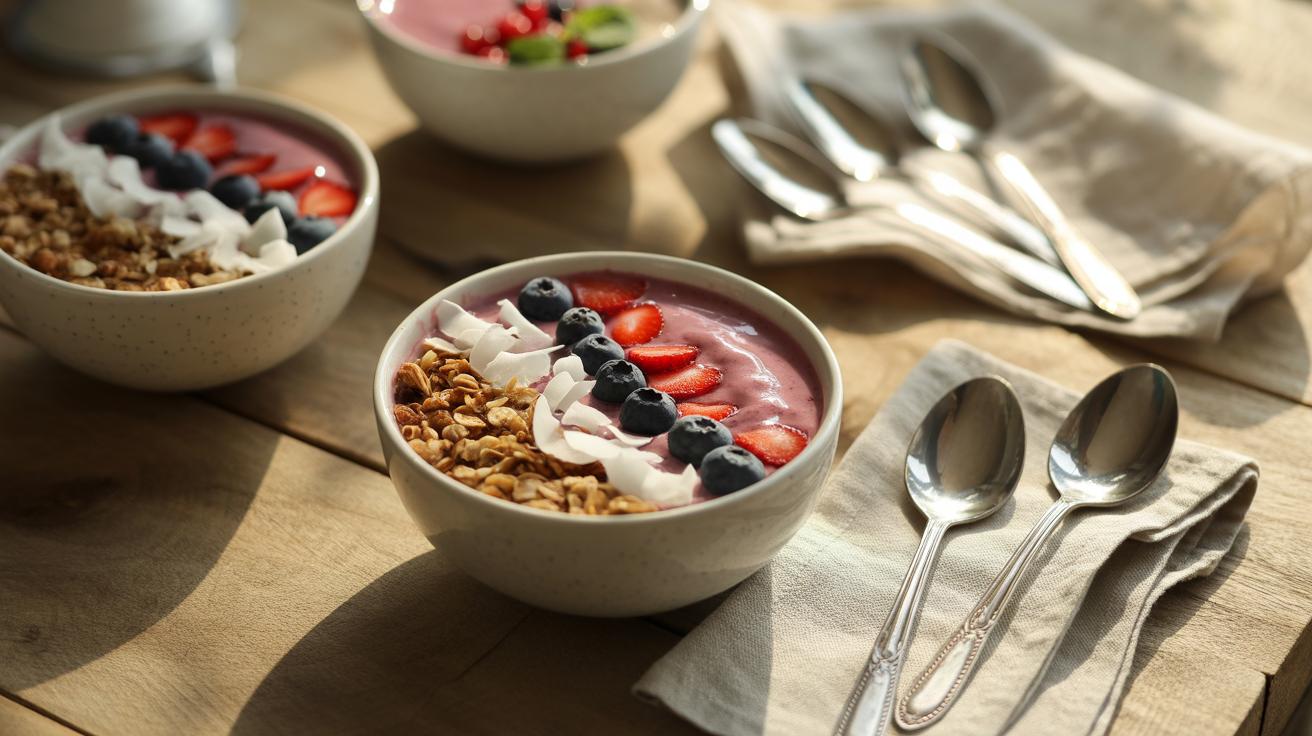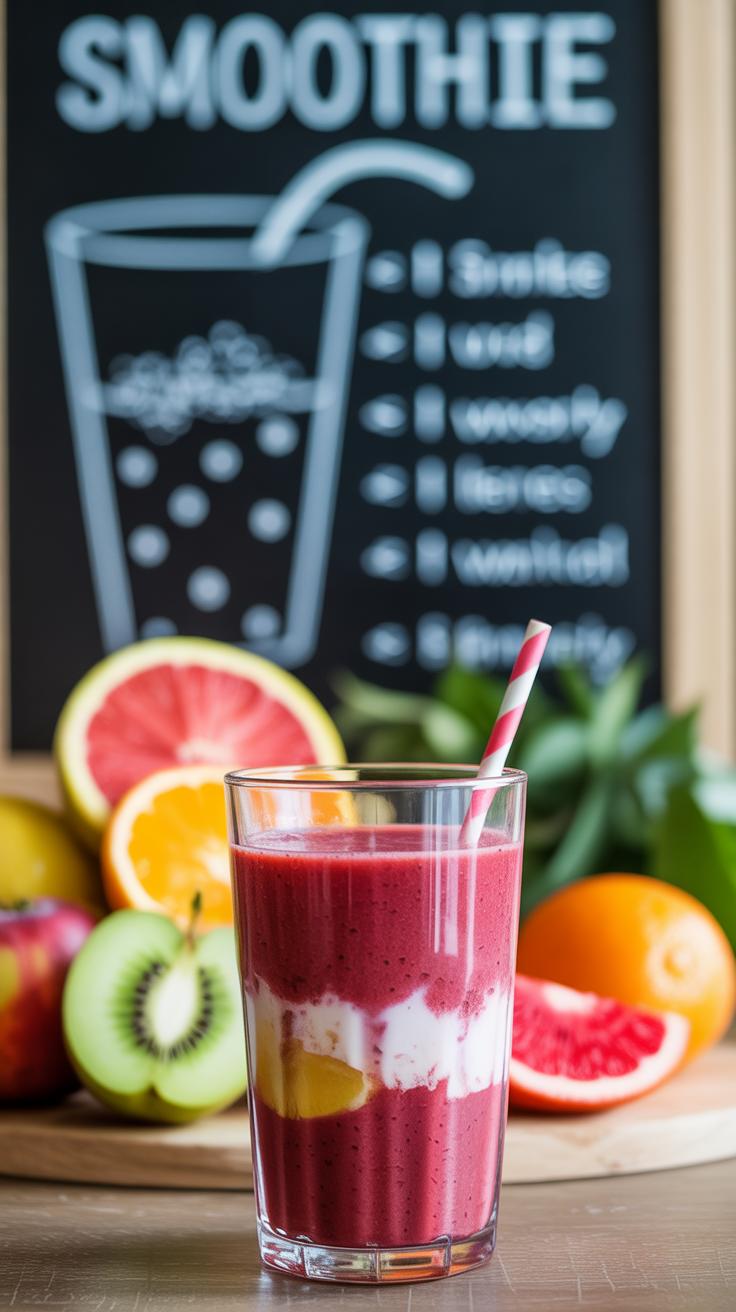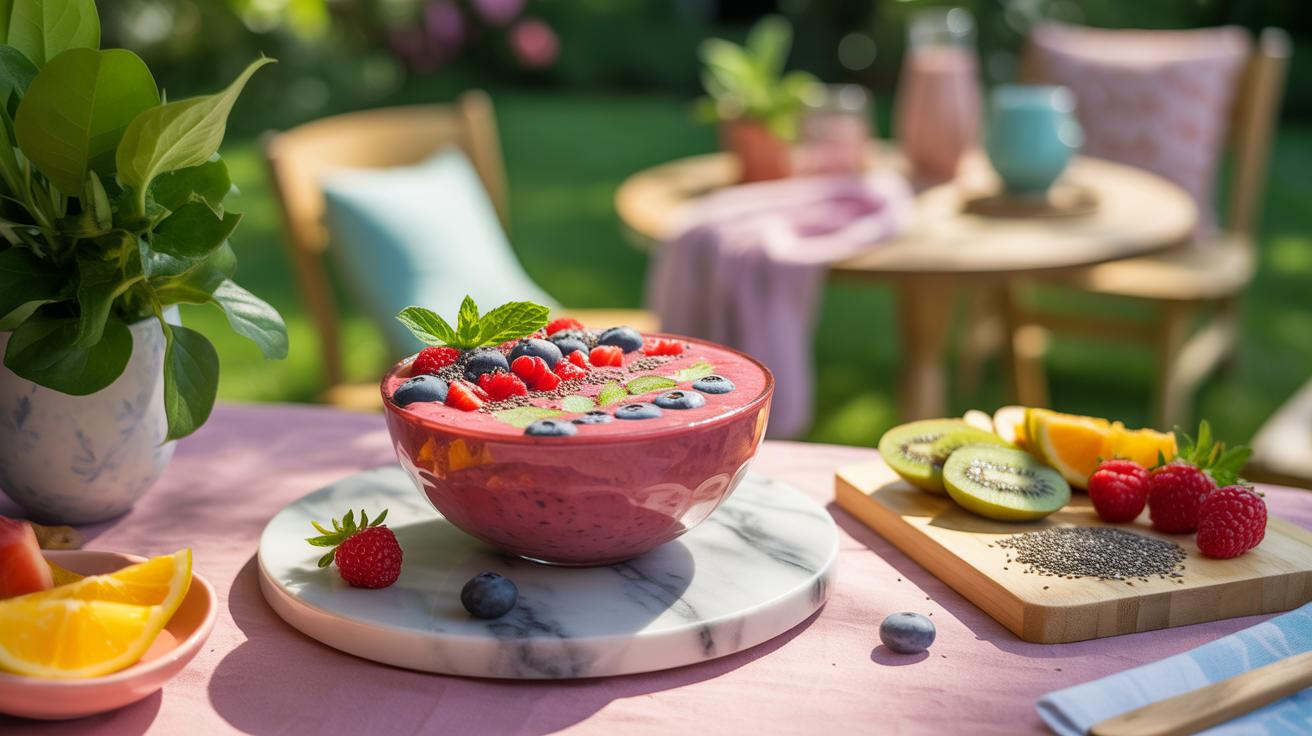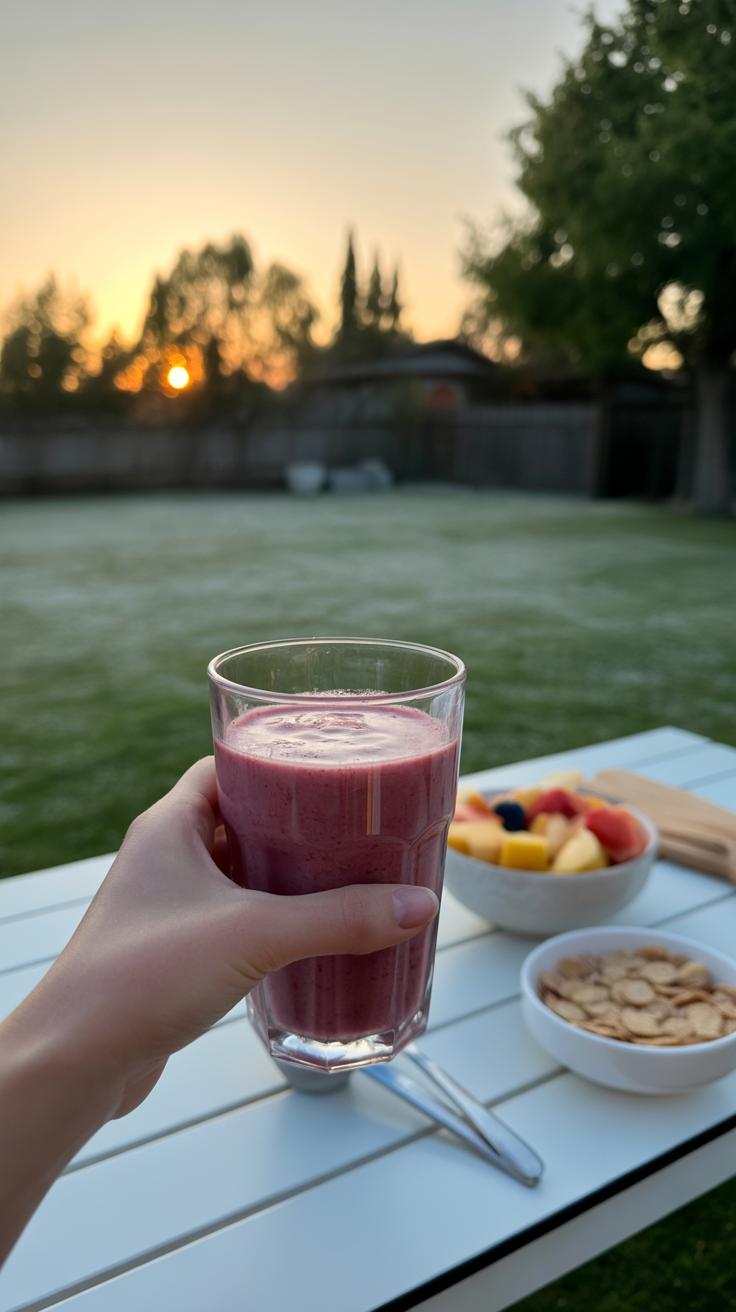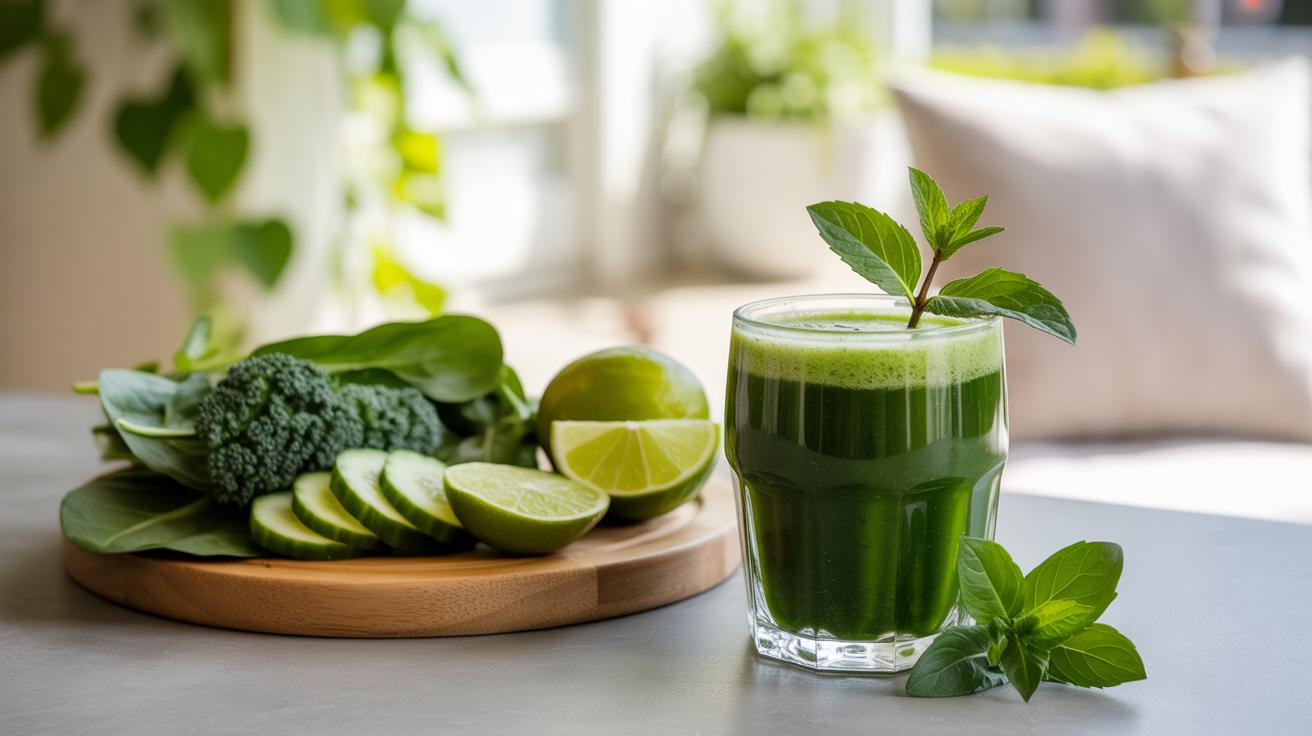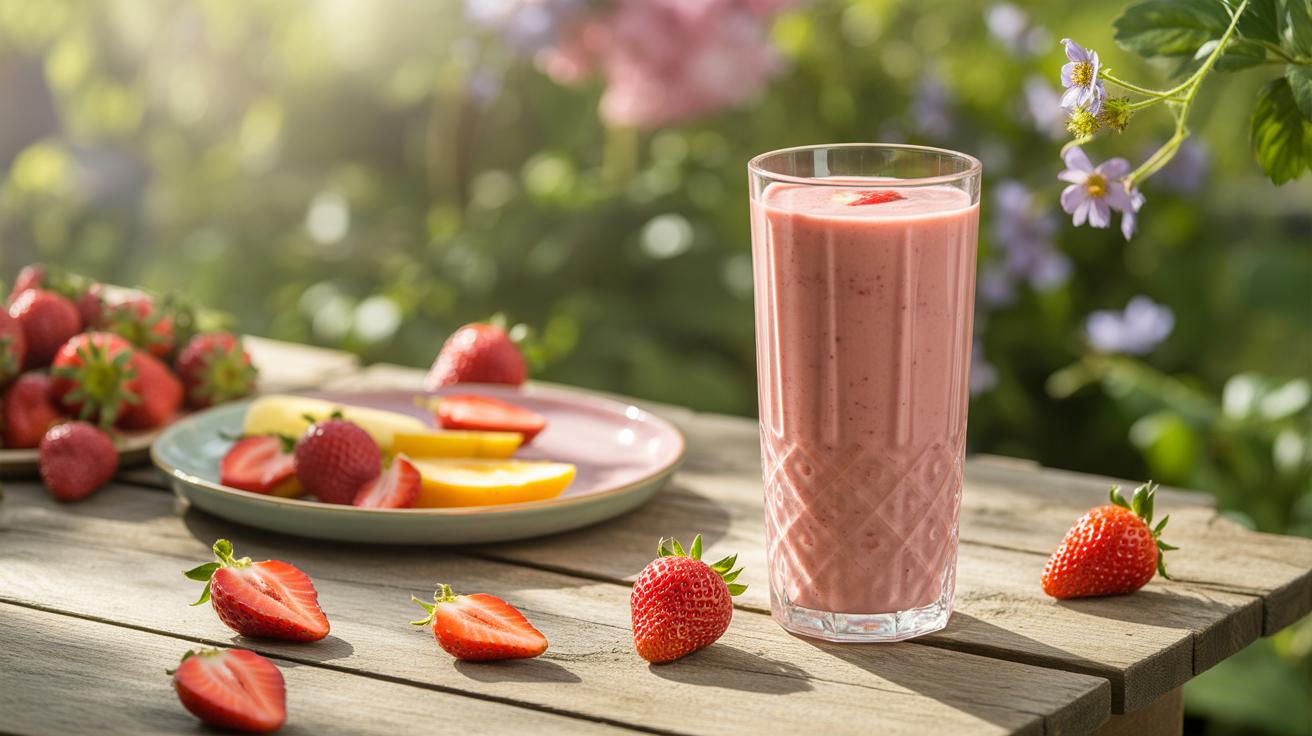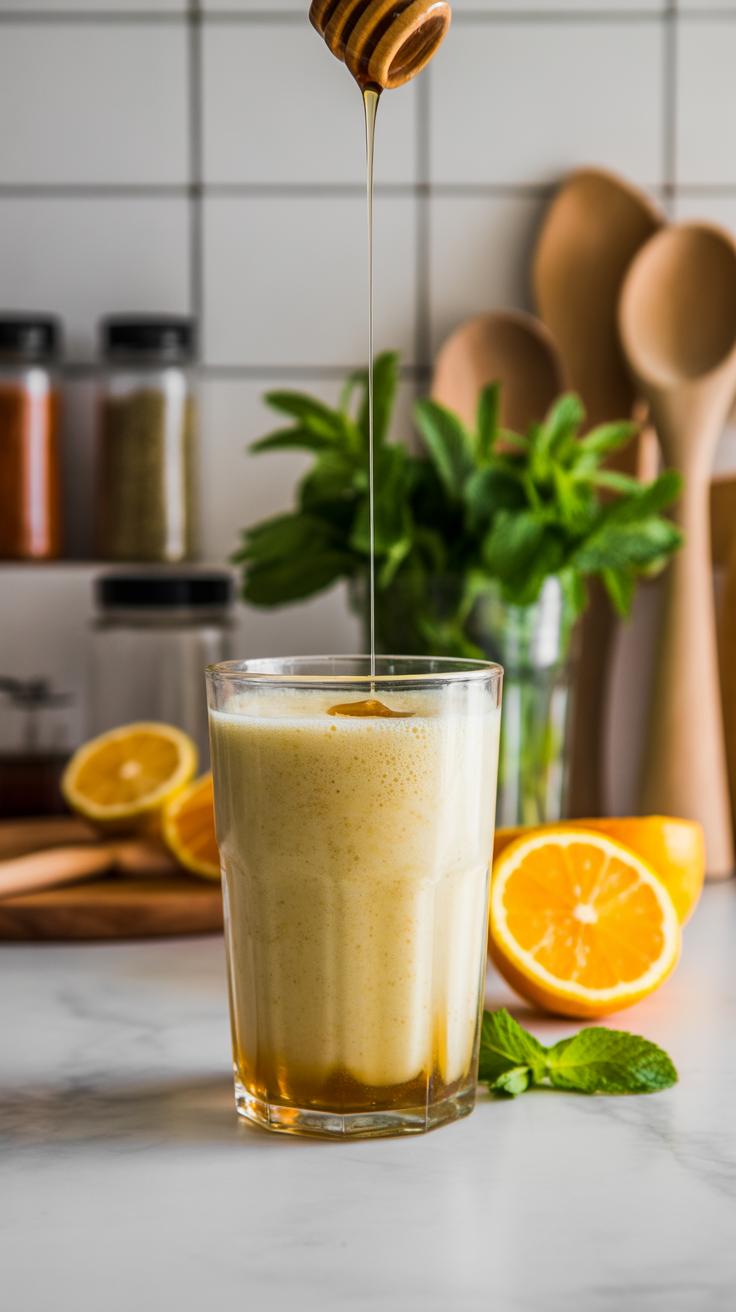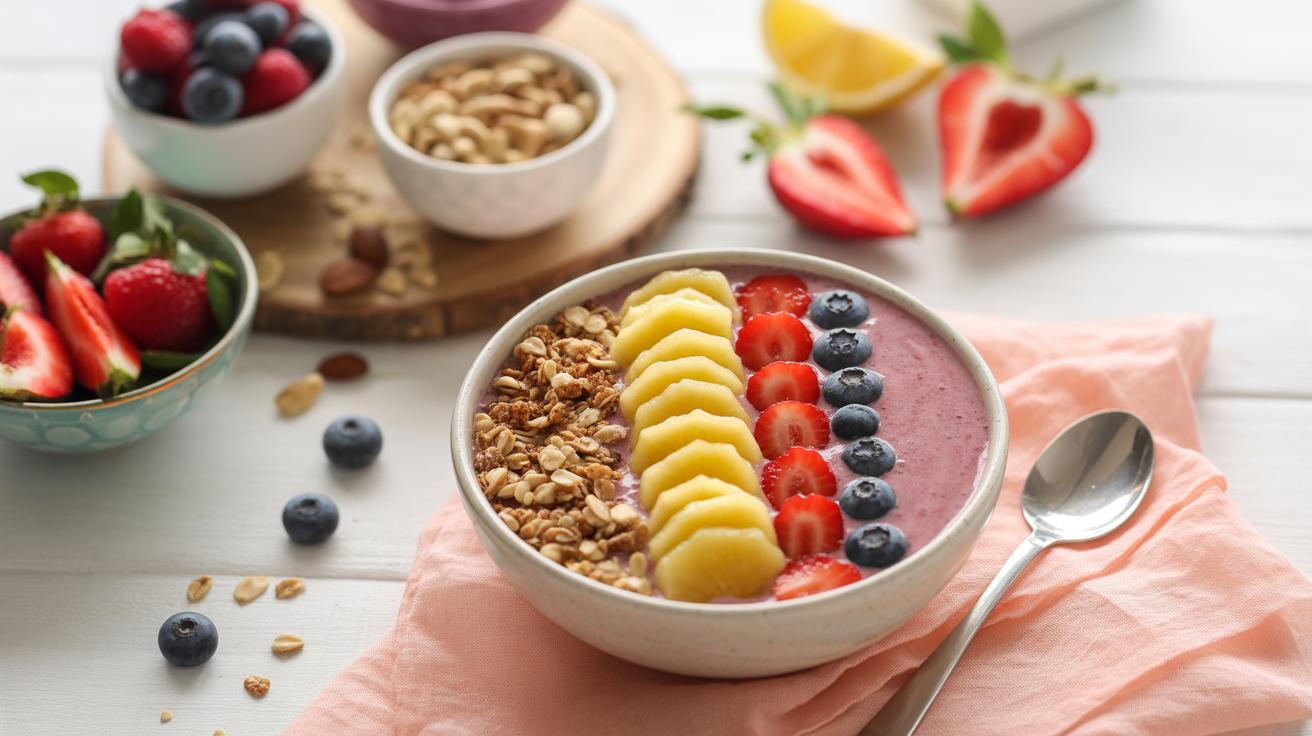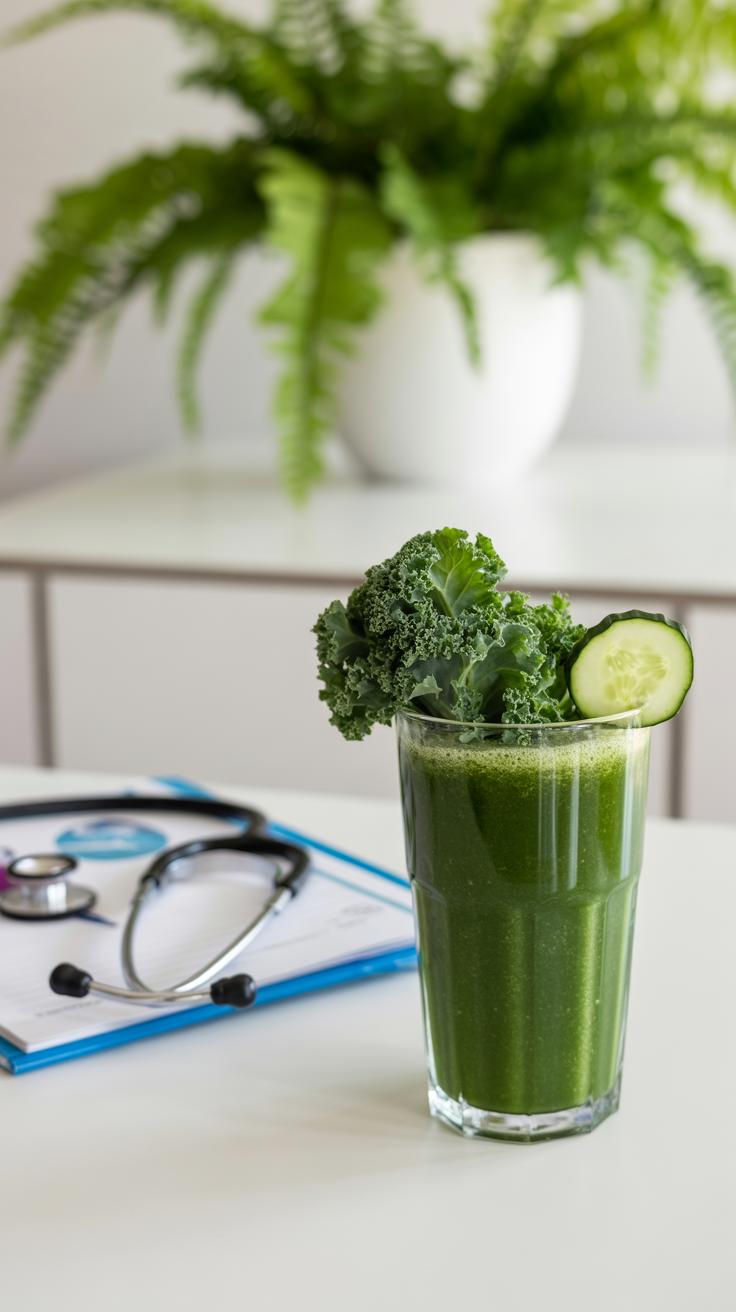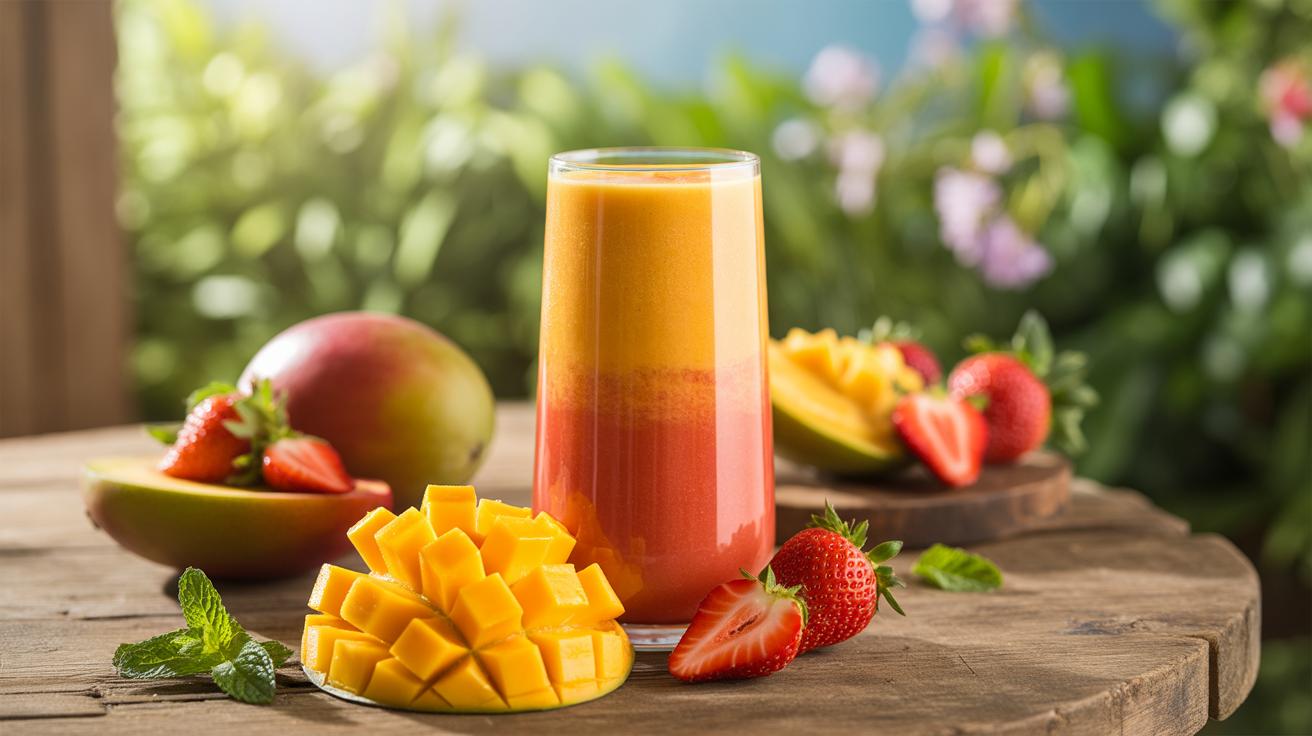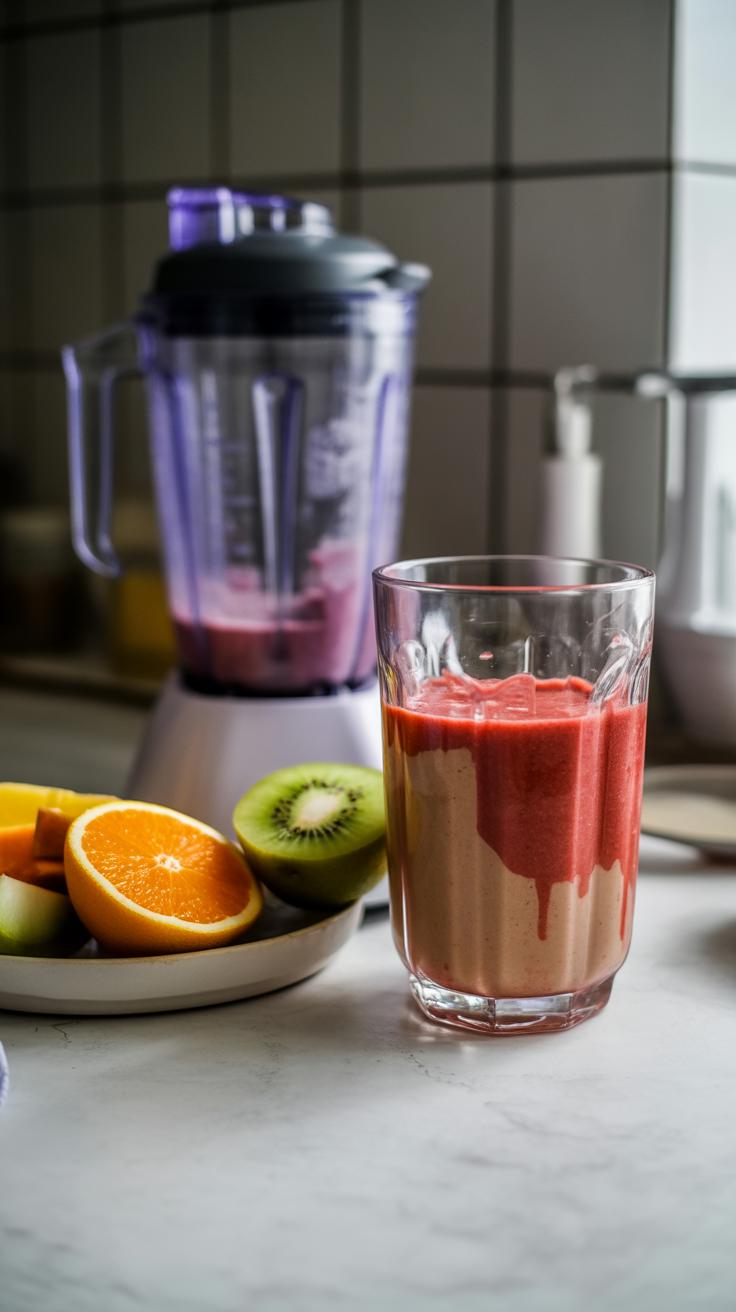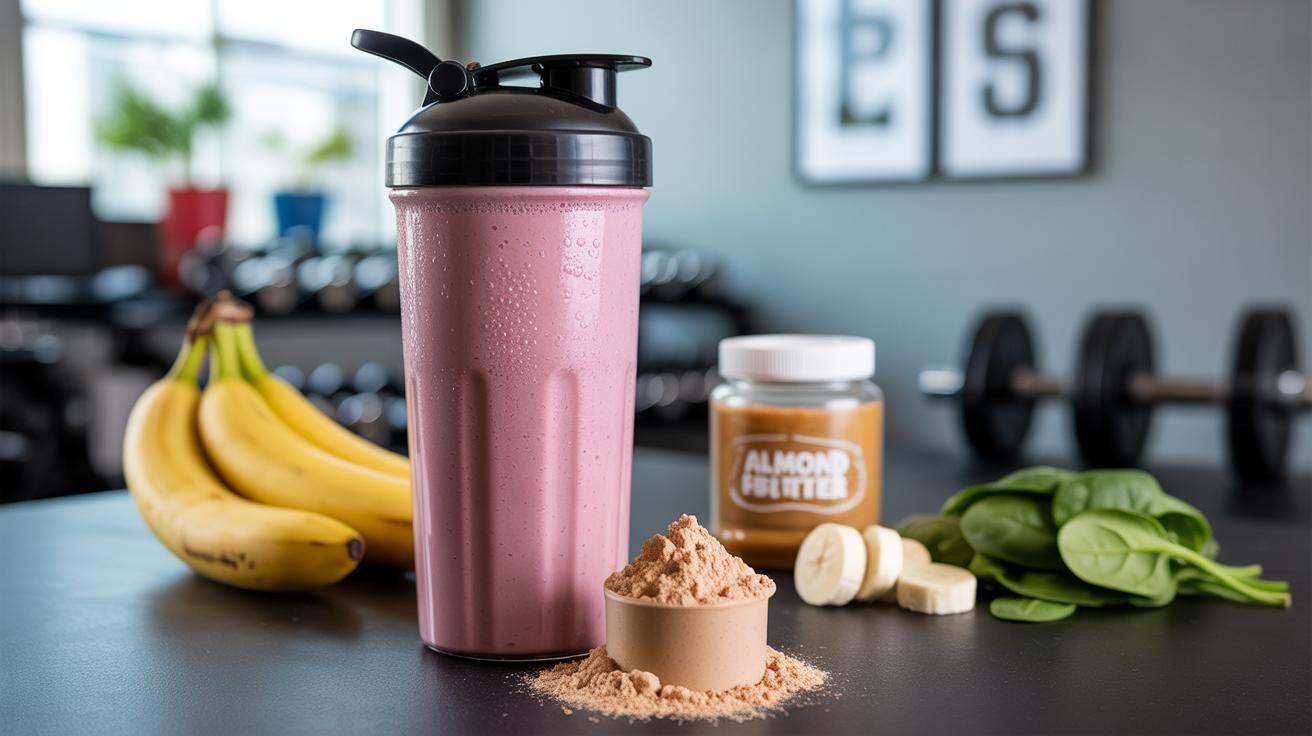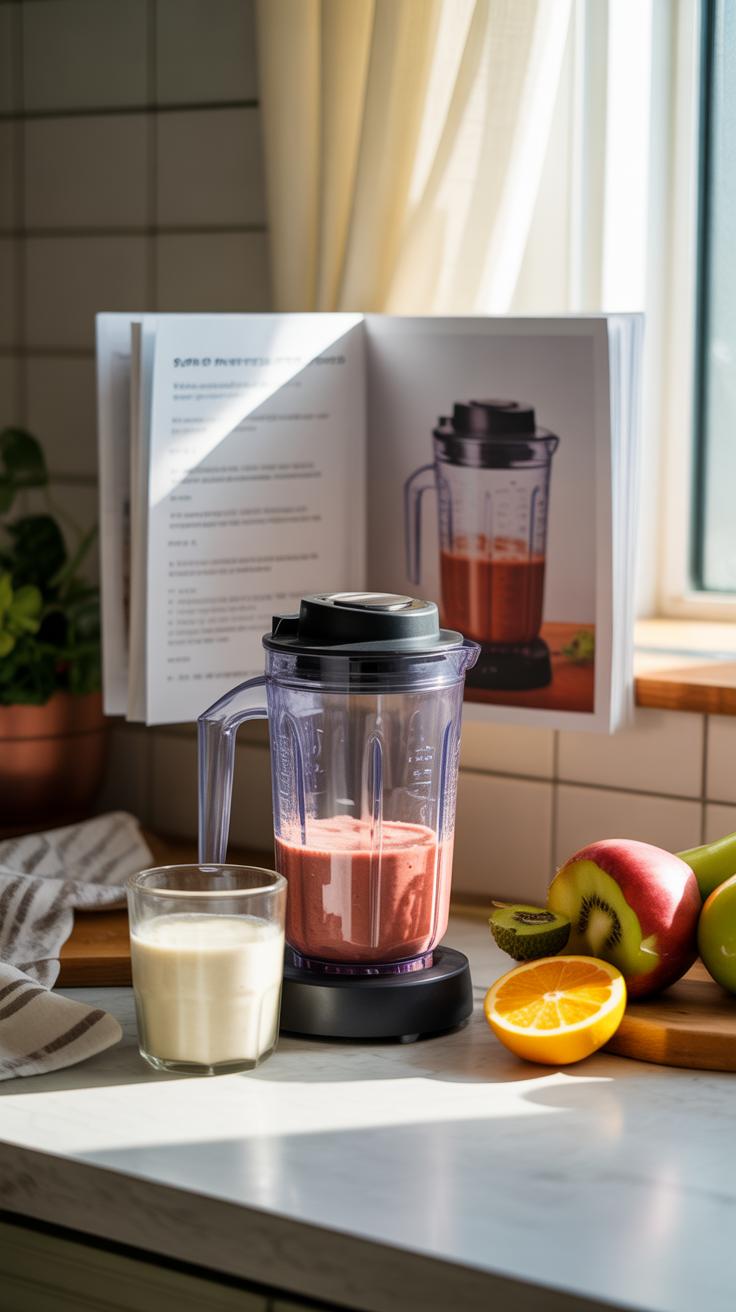Introduction
Breakfast is an important meal to fuel your day. Smoothies can be a great choice to start your morning with energy and nutrients. A smoothie is a blended drink made of fruits, vegetables, liquids, and sometimes other ingredients like yogurt or protein powder.
This article explores healthy smoothie recipes you can make at home. You’ll learn what ingredients to use for a balanced breakfast and find ideas for tasty combinations. These smoothie recipes aim to keep you full and focused throughout your morning.
Understanding What a Smoothie Is
A smoothie is basically a drink made by blending together various ingredients into a thick and creamy liquid. At its core, you usually start with fruits—bananas, berries, mango, or whatever you like best. Then, there’s a liquid base that helps everything mix smoothly, like water, milk, or juice. Beyond those, many people add extras such as yogurt or protein powder to give the smoothie more body and nutrition.
When it comes to breakfast smoothies, the focus tends to be on quick, filling options that carry enough nutrients to fuel your morning. You might see fruit-only blends, or something with leafy greens sneaking in for that health hit. Others might pack protein to keep hunger at bay until lunch. Each type serves a slightly different purpose, depending on what your morning routine demands.
Ingredients That Make a Smoothie
Breaking down smoothie components helps understand their roles better. Fruits are the obvious sweeteners; they add natural sugars, fiber, and important vitamins. Think blueberries for antioxidants, or pineapple for vitamin C. Then come liquids—these don’t just loosen the mixture but also influence taste and texture. Water keeps it light; milk or nut milks add creaminess and subtle flavor.
Extras like yogurt or protein powder aren’t just for taste; they bring substance. Yogurt can thicken a smoothie and add probiotics for digestion, while protein powders boost your intake, especially useful if you skip other breakfast proteins. Seeds, nuts, or oats might join the mix, contributing crunch, fiber, or healthy fats. Each ingredient changes the final product in small but significant ways.
Different Types of Smoothies
There’s a wide range of smoothie types you’ll encounter. The classic fruit smoothie focuses on sweet, simple blends—mango and banana, strawberries and oranges—rich in natural sugars and vitamins. Green smoothies mix in veggies like spinach or kale, mixing health benefits with a milder taste than you might expect. These are often a bit less sweet but packed with fiber and minerals.
Protein smoothies lean heavily on powders or nut butters, targeting those who want muscle fuel or a more satiating start to their day. Yogurt-based smoothies add tang and creamy texture and often include probiotics to help gut health. Each variety has its place, depending on what you want out of your breakfast drink—whether energy, nutrition, or just something refreshing and easy.
Why Choose a Smoothie for Breakfast
Starting your day with a smoothie can feel like a smart move, especially when mornings tend to be a rush. Smoothies pack a lot into one quick drink. It’s often easier to drink a blend of fruits, veggies, and protein than to sit down for a full meal. That convenience alone makes a difference—no need for plates or cutlery, just blend and go.
You get more than just convenience. Smoothies deliver a big nutrient punch early in the day. They’re a natural source of vitamins, minerals, and fiber if you include whole fruits and vegetables. Think about waking up tired but knowing you’re fueling your body with nutrients that support energy, focus, and overall health.
Energy is another aspect worth thinking about. Smoothies can offer a steady release of energy to keep you going without the heavy slump that some breakfast cereals or pastries cause. By combining carbs from fruit, protein from yogurt or nut butters, and healthy fats, you balance the fuel your body needs. It might not keep you full all morning, sure, but it’s often enough to get you started—or maybe carry you to a mid-morning snack.
Plus, smoothies aren’t just about what’s in them, but how they fit into your routine. They’re fast. Really fast.
Quick and Easy to Prepare
Most smoothie recipes take just minutes to make. If you’ve prepped some ingredients or frozen fruit, it’s even faster—often under five minutes. That speed suits mornings when you’re juggling tasks, or when you just don’t feel like making a fuss. No pots or pans, no endless chopping. Just toss, blend, and pour.
Think about how many times you’ve skipped breakfast simply because it felt like too much work. Smoothies can be the answer here. You can customize them, too—ready to suit your time and tastes. It’s not a meal that demands hours of planning, so you can actually stick to it long term, or swap ingredients based on what’s on hand.
Provides Vitamins and Minerals
One of the most compelling reasons for choosing a smoothie first thing is how it boosts your vitamin and mineral intake. Fruits and vegetables each bring their own set of benefits—vitamin C from citrus, potassium from bananas, antioxidants from berries. Getting these in a blended form can be an easy way to hit your daily targets.
Plus, adding leafy greens like spinach or kale won’t overpower the flavor much but adds folate and iron. Sometimes, people overlook how easy it is to sneak in veggies this way. It’s not just a sweet treat but a mini nutrient bomb. So, you might feel good knowing your body is getting what it needs, even if you’re not exactly mindful of every detail.
Choosing the Right Ingredients
Selecting Fruits and Vegetables
Picking fruits and vegetables for your breakfast smoothie isn’t just about taste—though that’s part of it. You want options that balance flavor with nutrition. Berries like strawberries and blueberries often work well; they add sweetness but are low in sugar compared to some other fruits. Bananas bring creaminess and natural sweetness, though they can be a bit heavy if overused.
Leafy greens such as spinach or kale might not be your first thought, but they blend surprisingly well, especially if masked by fruit flavors. They pack a punch with vitamins and fiber. Sometimes, I find that adding cucumber or celery can give a refreshing twist without overpowering the drink. You might want to try different combos to figure out what suits your palate—and mood—in the morning.
Adding Protein and Other Nutrients
Protein often gets overlooked in smoothies, but it really helps keep you full and steady until your next meal. Yogurt is a popular choice, offering creaminess plus probiotics. Milk or plant-based milks add liquid and protein but vary a lot in their nutrient profiles—soy milk, for example, has more protein than almond milk.
Protein powder is another option. Some mornings, I like adding a scoop when I’m in a hurry or when I know I’ll need more sustained energy. There’s whey, pea, and even rice protein varieties. Don’t forget nuts or seeds like chia or flax; they boost protein and add healthy fats, which also slow digestion. It’s a bit of balancing act, but layering these ingredients makes breakfast smoothies more than just a quick drink—more like a meal that actually fuels you.
Popular Smoothie Recipes for Breakfast
Fruit and Yogurt Smoothie
If you want a quick, simple breakfast smoothie, the fruit and yogurt combo rarely lets you down. Start with a cup of plain Greek yogurt—its creamy texture and protein help keep you full longer. Then, add about a cup of your favorite mixed fruits; berries work well, but bananas or mangoes are good choices too.
Pour in half a cup of your preferred milk—dairy or plant-based. Blend until smooth. That’s basically it. You get protein, calcium, antioxidants, and natural sweetness, all packed in one glass.
Nutrition-wise, this smoothie hits several marks: probiotics from yogurt support digestion; fruits bring vitamins and fiber; and the milk adds some extra calcium and hydration. I’ve found that this blend can keep me satisfied through a busy morning without feeling weighed down. Though, some mornings I do wonder if it’s just the sugar talking.
Green Protein Smoothie
Green smoothies seem daunting, but they don’t need to be. Try combining a handful of spinach or kale, one banana (for sweetness), half an avocado (for creaminess and healthy fats), and a scoop of protein powder or a spoonful of nut butter. Add water or almond milk to help blend it all.
This mix gives you fiber, vitamins, protein, and good fats. The greens provide iron and antioxidants, while the protein supports muscle repair and energy levels. Plus, the avocado offers a nice texture that I actually find preferable to watery greens-only recipes.
It’s curious—green smoothies can taste earthy or fresh, depending on the combo. So, tweaking the fruit amount or protein source might matter to you more than you think. For me, if the smoothie tastes too “green,” I double the banana. Maybe you’ll want to do the opposite?
Tips for Making Your Smoothies Taste Great
Balancing Sweetness and Freshness
Finding the right balance between sweet and fresh in a smoothie can really change the whole experience. If you pile on too many sweet ingredients, your smoothie might feel more like a dessert than breakfast—which, sure, happens to me sometimes, but it can get old fast. On the other hand, relying only on greens and unripe fruits risks a bitter or bland flavor that turns you off.
One trick is to start with naturally sweet fruits like ripe bananas, berries, or mango and combine them with something bright and fresh—think: a splash of lemon juice or a few mint leaves. That zing cuts the sweetness without overpowering it. Sometimes a bit of apple or pear adds a mild sweetness that feels just right, not too sugary but still pleasant. Play around in small batches until you hit your ideal spot. Sweetness doesn’t always mean sugar; some veggies and herbs add natural flavor that can surprise you.
Using Texture and Temperature
Texture can make or break whether you keep coming back to your smoothie. Think about how adding frozen fruits instead of fresh ones creates a thicker, colder drink, almost like a soft shake. Ice does that too, but sometimes it waters things down as it melts, making the flavor less intense. Frozen fruits keep your blend thick without ruining the taste, but a handful of ice can be refreshing if it’s a warm morning.
Creamy ingredients, like yogurt or avocado, add smoothness that feels satisfying but might soften the chill you get from frozen ingredients—that’s not always a bad trade-off. I usually experiment with a small spoonful of nut butter or a bit of coconut milk when I want more body. Keep in mind, if your smoothie’s too thick, a splash of water or plant-based milk opens things up without losing flavor. Sometimes that texture balance is subtle but key—you might want to adjust it based on whether you’re sipping slowly or on the go.
How Smoothies Can Support Your Health
Energy Boost for the Day
Starting your morning with a smoothie can give your energy levels a steady lift rather than a quick spike and crash. When you blend fruits, vegetables, and proteins, you’re packing in a mix of carbohydrates, healthy fats, and sometimes even a bit of protein. These nutrients work together to fuel your body gradually. For example, the natural sugars in fruits provide quick energy, while fats from nuts or seeds help sustain that energy longer. I’ve noticed on days when I skip a smoothie and grab just coffee, my energy dips mid-morning — whereas with a smoothie, I often feel more balanced and alert for hours.
What’s interesting is that energy from smoothies isn’t just about calories, but about the quality of those calories. Your body absorbs vitamins and minerals that support how you feel throughout the day, which can sometimes be overlooked when you eat something processed or sugar-heavy.
Fiber and Digestion
Fiber is a key reason smoothies can do wonders for your digestion. Because you’re blending whole fruits and vegetables, you keep most of the fiber intact, unlike juices that remove it. This fiber helps regulate your digestive system, making bowel movements smoother and preventing that uncomfortable bloating some people get from less balanced breakfasts.
Not all fiber is the same, though. Insoluble fiber adds bulk, helping food move through your gut, while soluble fiber can slow digestion and keep blood sugar steady. For example, throwing oats or chia seeds into your smoothie ups the fiber content significantly, making digestion feel more ‘regular.’ I once underestimated this and stuck to just fruit—shortly after, I realized my digestion wasn’t as settled as when I added greens or seeds.
Have you noticed how sometimes a smoothie can make you feel lighter or less sluggish? That’s probably the fiber doing its job, helping your body process everything at a steady pace rather than leaving you feeling heavy or tired.
Common Mistakes to Avoid When Making Smoothies
Too Much Sugar in Smoothies
It’s easy to think smoothies are always healthy, but adding too much sugar can quickly undo those benefits. Sugar spikes blood sugar levels and can leave you feeling tired later rather than energized. This is especially true if your smoothie base relies heavily on fruit juices or sweetened yogurts instead of whole ingredients. You might want that sweet flavor, but think about how much sugar you’re really putting in.
To avoid this, try these tips:
- Use whole fruits like berries or apples instead of fruit juice for sweetness.
- Add natural sweeteners sparingly, like a tiny drizzle of honey rather than a big spoonful.
- Balance sweetness by including vegetables such as spinach or cucumber.
Once, I poured a whole cup of fruit juice into a smoothie and felt jittery an hour later. Lesson learned — sometimes less sugar makes all the difference.
Skipping Protein and Fiber
Many smoothies end up as just fruit blends, which can be tasty but usually leave you hungry pretty quickly. Protein and fiber slow digestion, keep blood sugar steady, and help you feel full longer. Without them, smoothies might spike your energy but leave you crashing or craving snacks soon after.
Consider these fixes:
- Add protein powder, Greek yogurt, or nut butters to strengthen the smoothie.
- Include fibrous ingredients like oats, chia seeds, flaxseeds, or leafy greens.
- Try blending in vegetables to boost fiber without changing the flavor drastically.
Skipping these nutrients has caught me out many mornings—I’d finish a smoothie and be hungry before mid-morning. Including protein and fiber feels more balanced, even if it makes the smoothie a bit thicker or less sweet.
Customizing Smoothies for Your Personal Needs
When you start tweaking smoothie recipes, it quickly becomes clear that there’s no one-size-fits-all formula. Maybe you’re avoiding dairy, or cutting back on sugar, or wrestling with some food allergies. You can still enjoy smoothies without feeling limited. For dairy-free options, try swapping cow’s milk with almond, oat, or coconut milk. These add creaminess without the lactose. If you want to keep sugar low, skip fruit juices and rely more on whole fruits and veggies. Greens like spinach or kale add nutrients and bulk without sweetness.
Allergies? That’s tricky, but easily managed. Use seeds like chia or flax instead of nuts if you’re allergic, and pick hypoallergenic fruits such as apples or pears. You’d be surprised how much variety you can get just by changing the base ingredients.
Thinking about fitness or weight goals? Smoothies aren’t just quick and easy; they can be powerful tools. For muscle building, add protein sources like Greek yogurt, protein powder, or nut butter. For weight loss, fiber-rich ingredients like avocado and seeds help keep fullness longer, while a splash of lemon or cinnamon can subtly boost metabolism. Have you tried blending spinach with a scoop of whey protein? It’s not fancy but works well.
So, when customizing, ask yourself what your body needs right now. Are you fueling a tough workout or just looking for a gentle start? That question alone can shift your smoothie choices quite a bit.
Getting Started with Your Smoothie Routine
Making smoothies a regular part of your breakfast doesn’t have to be complicated. The trick is to plan ahead, so you’re not scrambling each morning. Maybe you’ve tried whipping something up on a busy day and ended up with an odd mix or, worse, no breakfast at all. That’s where a little prep can truly change the game.
Planning Your Smoothie Ingredients
Think about your week before hitting the store. What fruits and veggies are in season or on sale? Picking versatile items helps—you can switch between spinach or kale, berries or bananas, depending on what feels right that day. Freshness matters, but frozen options are just as good for many ingredients and often last longer, which avoids waste. I tend to buy some fresh greens and frozen fruit to cover all bases.
Simple Prep Tips
Freezing fruit in portioned bags saves time—so does pre-measuring powders or seeds into small containers. When you wake up, your morning routine feels less like a chore and more doable. Sometimes, I keep my nut butters and yogurts ready to go in travel-friendly containers, making things even simpler. These small steps help you stick with the habit without much thought. Ever tried prepping smoothie packs? It’s like having breakfast on autopilot—well, almost.
Conclusions
Choosing to have a smoothie for breakfast can give you a quick, easy, and healthy start to the day. With the right ingredients, your smoothie can be full of vitamins, minerals, and protein to keep you energized and satisfied.
Try different combinations to find what you like best. Remember to include a good mix of fruits, vegetables, and protein. Your healthy breakfast smoothie can support your daily nutrition and bring variety to your mornings.

